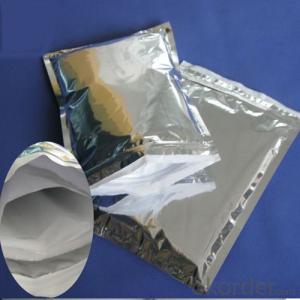When it comes to home comfort, few things are as essential as a well-functioning HVAC system. But did you know that a crucial component of this system is often overlooked? Let’s talk about the HVAC Flexible Duct Connector – a simple yet effective solution for connecting your HVAC system with ease.
The Unsung Hero of HVAC Systems
The HVAC Flexible Duct Connector is often the unsung hero of our heating and cooling systems. It’s not the most glamorous part of the system, but it plays a vital role in ensuring that your home stays comfortable all year round. Without it, you might find yourself dealing with uneven temperatures, reduced energy efficiency, and even potential health hazards due to poor air quality.
What Exactly is a Flexible Duct Connector?
A Flexible Duct Connector is a semi-rigid or flexible tube that connects various components of your HVAC system, such as the air handler, evaporator coil, and ductwork. It’s designed to absorb vibrations and compensate for any misalignments or movement in the system, ensuring a seamless and efficient airflow.
Why Use a Flexible Duct Connector?
Using a Flexible Duct Connector offers several benefits that you might not have considered. Here are a few reasons why it’s a smart choice for your HVAC system:
– Efficiency: By connecting components with minimal resistance, a Flexible Duct Connector helps maintain optimal airflow and energy efficiency.
– Ease of Installation: These connectors are generally easier to install than rigid ducts, often requiring less labor and time.
– Adjustability: They can be adjusted to fit various system configurations, making them a versatile option for any setup.
– Durability: Made from durable materials, Flexible Duct Connectors can withstand the test of time and regular use.
– Cost-Effective: Compared to other duct materials, they are often more cost-effective, saving you money in the long run.
Installation Made Simple
The process of installing a Flexible Duct Connector is straightforward and can be broken down into a few simple steps:
1. Measure and Cut: Measure the distance between the components you’re connecting and cut the connector to the appropriate length.
2. Prepare the Connection: Ensure that the ends of the connector are clean and free of debris.
3. Attach the Connector: Securely attach one end of the connector to the air handler or evaporator coil, following the manufacturer’s instructions.
4. Seal and Insulate: Apply a high-quality sealant to prevent air leaks and insulate the connector to minimize heat loss or gain.
5. Test for Leaks: Once installed, test the system for any leaks to ensure optimal performance.
Common Myths Debunked
There are some common misconceptions about Flexible Duct Connectors that we should address to clear the air:
– Myth 1: Flexible Duct Connectors are not as durable as rigid ducts. Fact: They are made from strong materials designed to last.
– Myth 2: They are difficult to install. Fact: The installation process is quite simple and can be done with basic tools.
– Myth 3: They are only suitable for temporary setups. Fact: Flexible Duct Connectors are perfectly suitable for permanent installations.
The Emotional Connection
While it might seem odd to talk about the emotional connection to a duct connector, think about the comfort and peace of mind it brings. A well-installed Flexible Duct Connector means you can enjoy a consistent temperature, breathe cleaner air, and save on energy bills – all of which contribute to a happier and healthier home environment.
The Future of HVAC Flexible Duct Connectors
As technology advances, we can expect to see improvements in the materials and designs of Flexible Duct Connectors. Innovations will likely focus on enhancing durability, flexibility, and energy efficiency, ensuring that these connectors continue to be a valuable part of HVAC systems for years to come.
Wrapping Up
In conclusion, the HVAC Flexible Duct Connector is more than just a piece of tubing – it’s a key player in your home’s comfort and efficiency. By understanding its importance, benefits, and proper installation process, you can ensure that your HVAC system operates at its best. So, the next time you think about your heating and cooling system, remember the unsung hero that keeps everything connected with ease.

